Welcome to my review of my Maxtoch Xsword L2K!
This is part 2 of my two part L2K/L3K review since the combined post felt too long.
Part 1 is where I explain everything I know about LEPs (will be releasing it tomorrow)
Part 2 is the actual review portion
Disclaimer: I purchased the L2K with my own money and will be giving an unbiased yet enthusiastic review since I’ve really enjoyed playing with this laser of a light. I have a referral code: “SLXS30K” (valid until June 30th) which gives you a $30 discount if you decide you want to pick one up for yourself.
Here are the links to the Aliexpress pages:
L2K short version (2X20350)
L2K Long Version (2X21700)
L3K (2X21700)
Without further ado, let’s begin with an Overview:
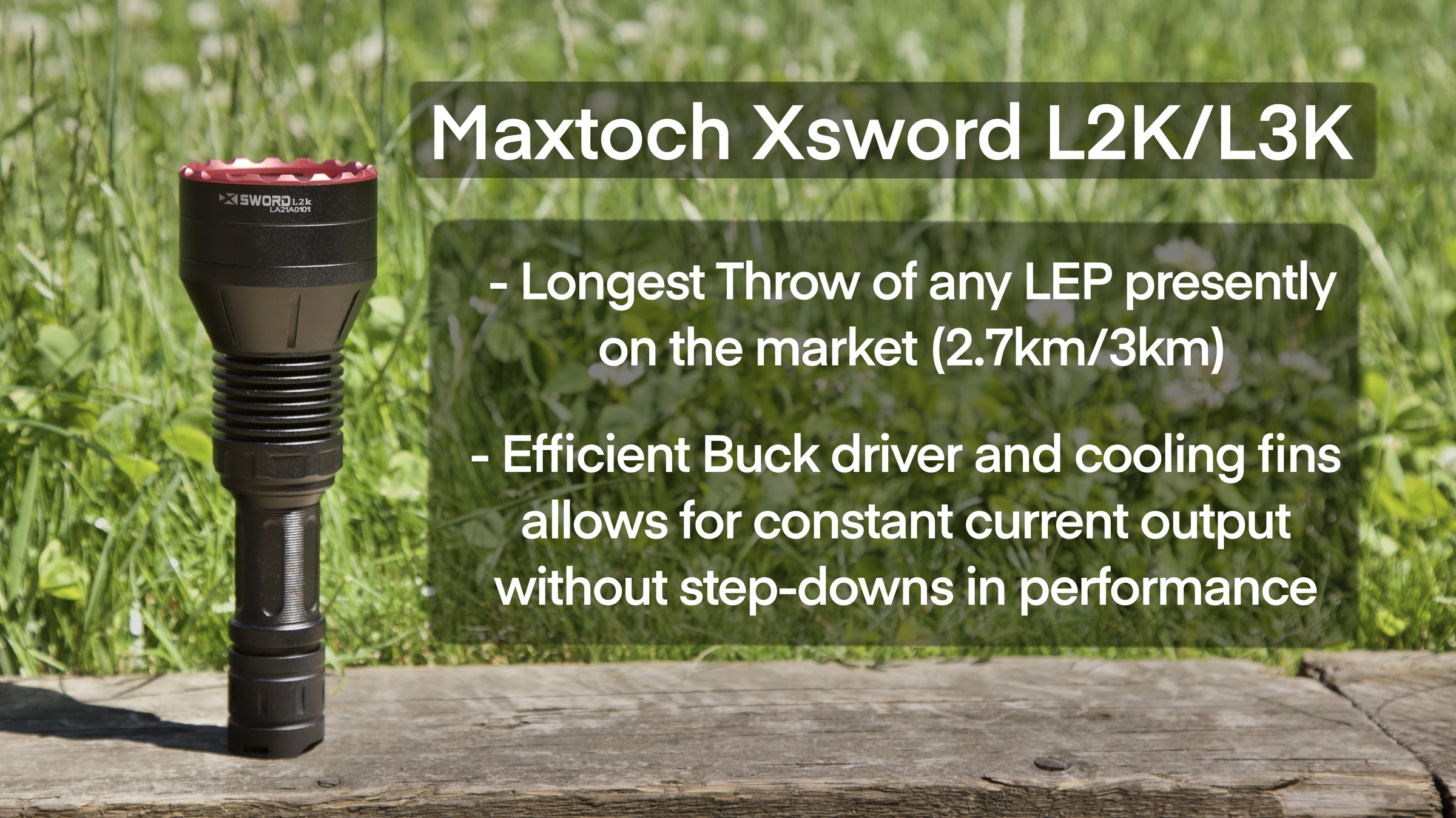
The Xsword L2K and L3K are LEPs made by Maxtoch, a flashlight company which appears to specialize in hunting lights. The L2K and L3K share the same host and optics but use different LEP modules. I suspect they also share the same driver since Maxtoch’s quoted runtimes for the two lights are identical.
If you’re unfamiliar with LEPs, they can be best described as spill free, high intensity spotlights. I do recommend checking out Part 1 (soon to be released) for more information on LEPs in general.
Personally, I don’t really see LEPs as practical, useful flashlights for seeing things in the dark. To me, they are incredibly fun laser-like lights that are much safer than real lasers, and legal to own.
Here’s another shot of my L2K. Note that I didn’t have the extra front glass lens installed in this photo.
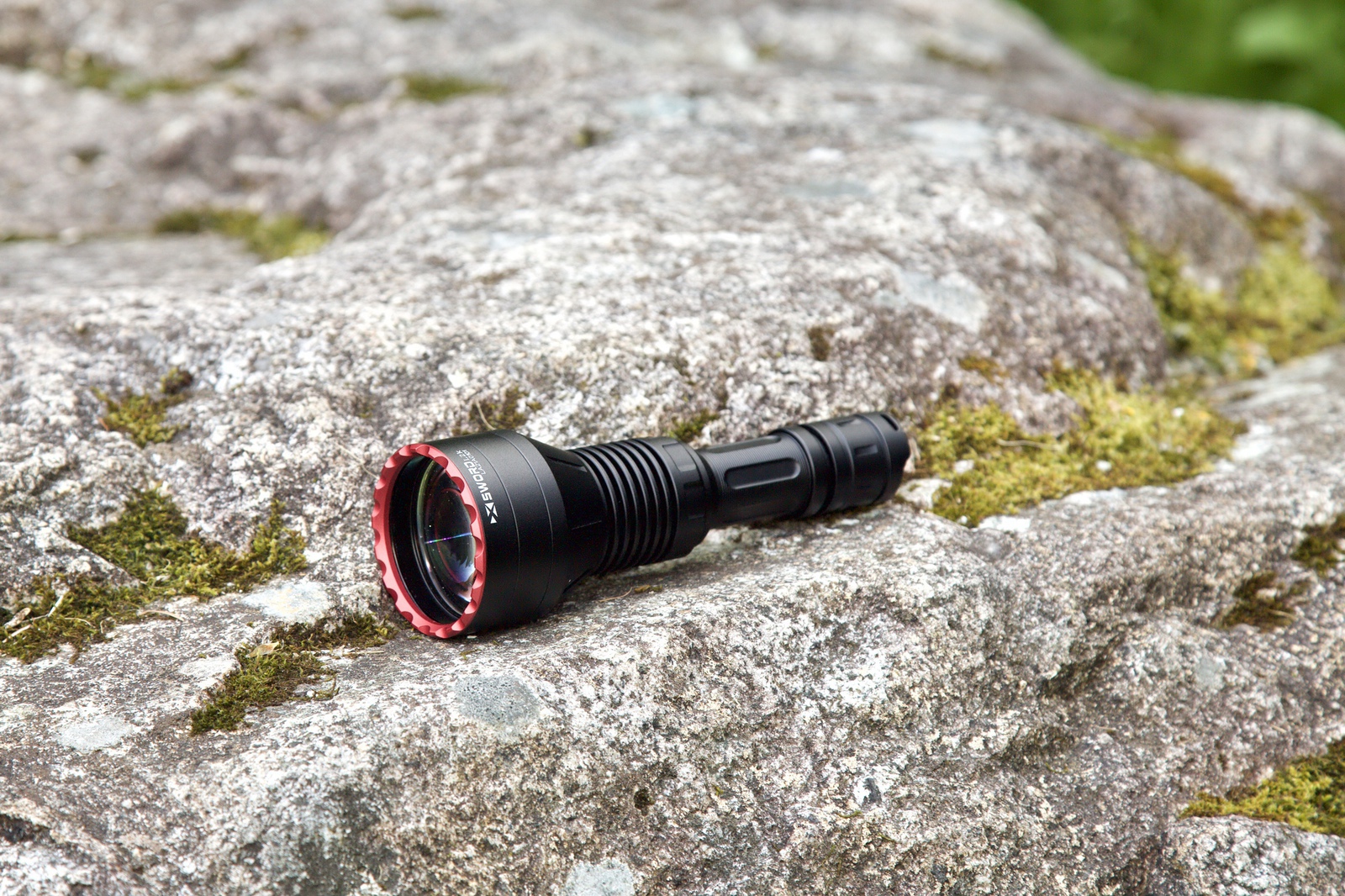
I’ve been playing with the L2K for the past few weeks, which I purchased prior to the L3K’s release. The L2K uses an older style LEP module with mirrors and has a range of 2.7 km according to Maxtoch. The L3K on the other hand uses a newer style laser phosphor module with a range of 3km.
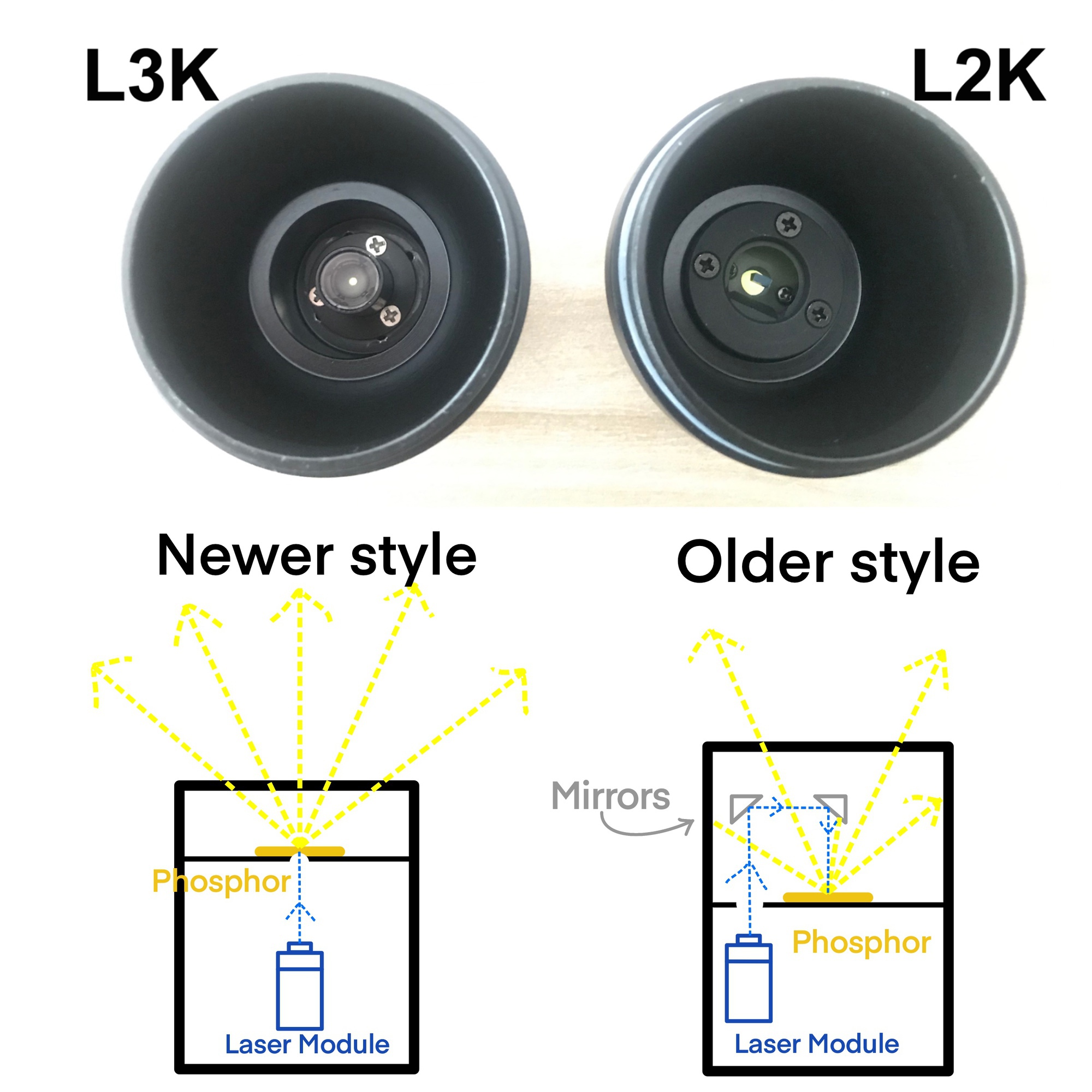
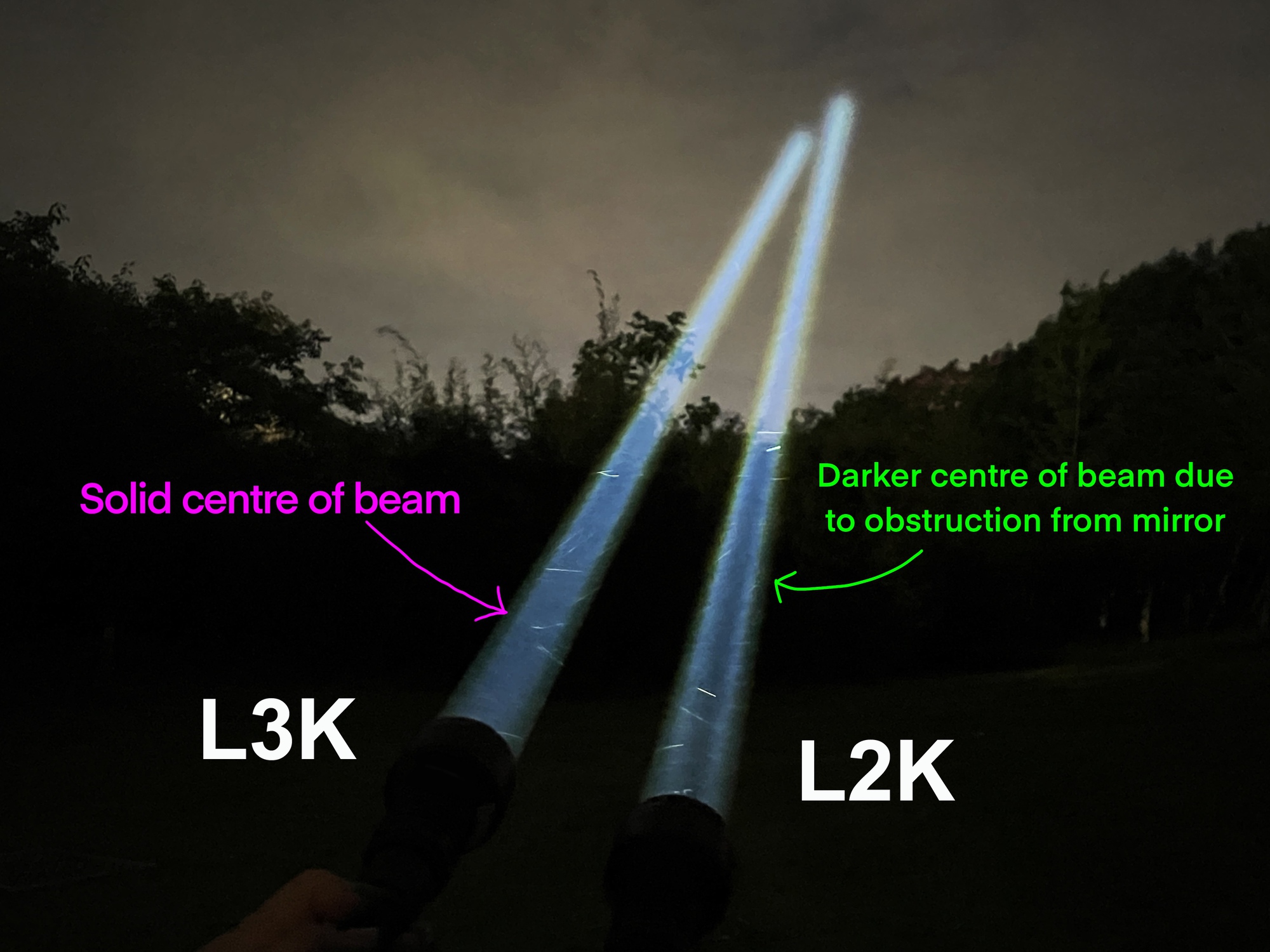
As you can see, one of the mirrors of the L2K’s LEP module obstructs the middle of the beam, making it a little hollow looking in photos. This effect isn’t a big deal when seen in person and I expect you’ll have just as much fun with either one of these LEPs.

Here are some additional shots of my L2K’s hole in the beam. It is visible under 2 meters away, but smooths out beyond that.
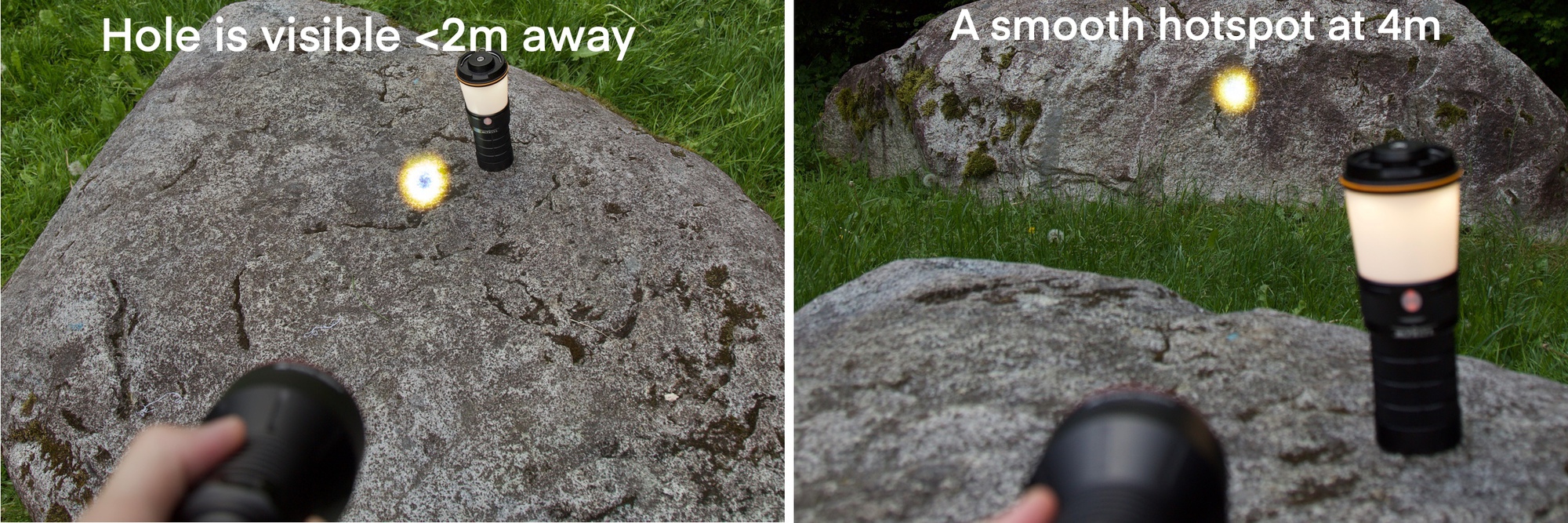
I don’t have the L3K, but I have seen comparison photos and information provided by Maxtoch. With the L3K being so similar to the L2K, this one review should sufficiently cover both.
The L2K/L3K are available in a short body (2X20350 batteries) or with the longer tube (2X21700 batteries). The longer tube greatly extends the runtime on high from the short body’s 50 minutes to over 3 hours with the long tube. I wanted something more compact and I’m more than happy with the 50 minutes of runtime the shorter tube gets at max output.
Here are the runtimes and some additional specifications provided by Maxtoch:
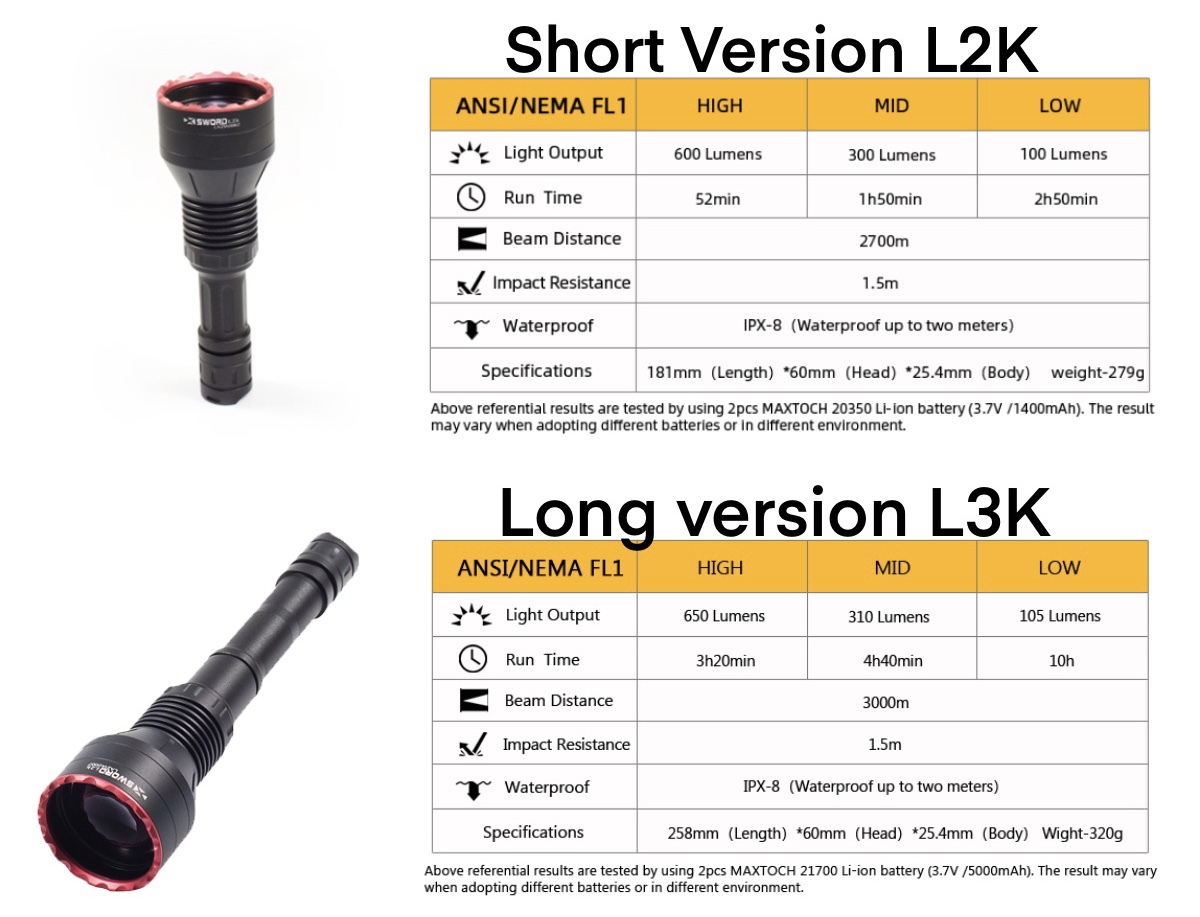
The L2K/L3K has three modes: High-> Medium-> Low, and is operated using a mechanical forward switch. A forward switch means that the light turns on instantly when the switch is held down rather than turning on when the switch is released like with the reverse clickies often found in Convoys.
The L2K/L3K has ON time mode memory; if you leave the light on in a mode for more than 5 seconds before turning it off, the light memorizes that mode and returns to it the next time you switch the L2K/L3K on. If you leave the L2K/L3K in a mode for less than 5 seconds before turning it off, the light will go to the next mode when you next turn it on.
Included in the kit:
You get batteries, a nice Xtar charger (most flashlight companies include a generic one), a hard-shell storage case, a holster, an extra switch, and the usual lanyard and o-rings.

The L2K includes just a green filter and a yellow filter while the L3K also comes with an additional red filter.

Additional accessories for mounting the L2K/L3K on a gun can be purchased separately from Maxtoch.

L2K/L3K Quality and Finish
The L2K and L3K share the same host which is anodized with Type 3 Hard Anodization. I tried scratching my L2K’s tail cap with a knife which didn’t leave a mark, signifying that the anodization is indeed Type 3 HA. Keep in mind that the softer aluminum underneath can still be dented through the anodization.
The surface finish is semi-matte which I like more than Sofirn’s shiny type 3 anodization, but overall I still prefer Acebeam’s smooth matte finish the most. This is however just my personal preference and yours may differ.

The short body L2K/L3K is surprising small for its immense throw numbers, with a head diameter of just 60mm across. Size wise, it’s like an Astrolux FT03 with a narrower head. I don’t have my collection of lights with me at the moment, so here’s a size comparison with the LT1 and my D4V2. The L2K/L3K is the size of a mid sized thrower, and is more of a jacket pocket light. The included holster is quite convenient for carrying it on my belt.

The threads are pretty decent, trapezoidal, and there’s no feeling that you’ll accidentally cross thread the tube when screwing the threads.

The convex lens used by the L2K/L3K is made of an optical grade plastic, coated with an anti-reflective coating. A plastic lens helps keep the weight down and shouldn’t be an issue now that a front glass lens is provided with L2Ks/L3Ks purchased directly from Maxtoch. The front glass lens is so clear that it’s hard to tell it’s even there from certain angles.
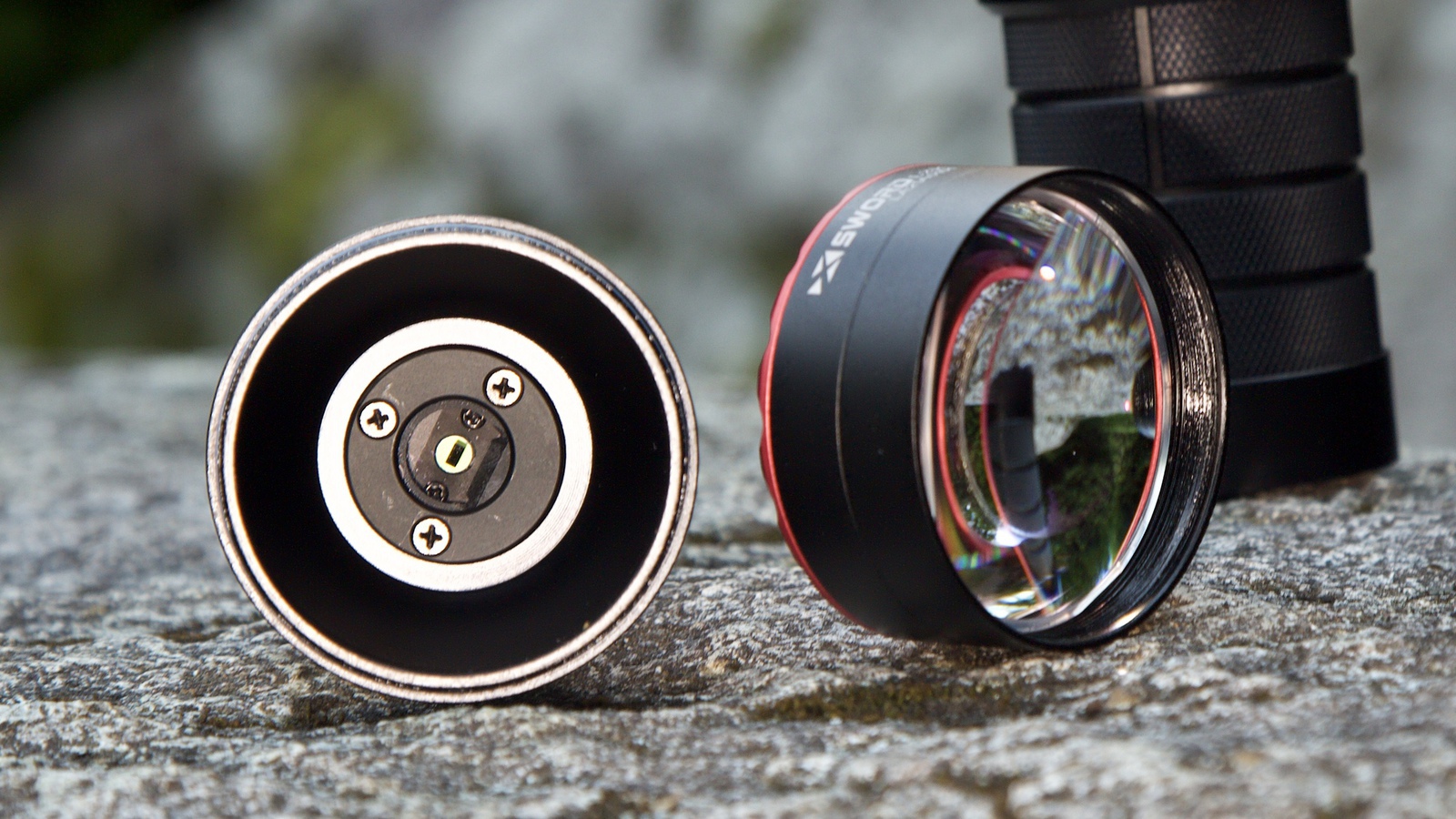
Here’s another look at the LEP module in my L2K and the convex lens.
What sets the L2K/L3K apart from other LEPs:
LEPs have the best throw to size ratio of all lights on the market, and the L2K/L3K are the best of the bunch.
Both the L2K and L3K have the highest candela and furthest throw of any readily available LEP, with the L3K having 3 km of throw vs the 2.7km of the L2K.
More importantly than outright throw is how long LEPs can maintain their highest outputs. Most LEPs thermal throttle and decrease their output after just a few minutes to prevent themselves from becoming too hot. The L2K/L3K’s driver does NOT thermal throttle/step down like almost all other LEPs do.
Below is a runtime graph I measured of my short body L2K.
That decline in output during the first 20 minutes is inevitable with LEPs because of the laser diode’s sensitivity to heat. The output then remains pretty constant until the batteries deplete and LVP kicks in.
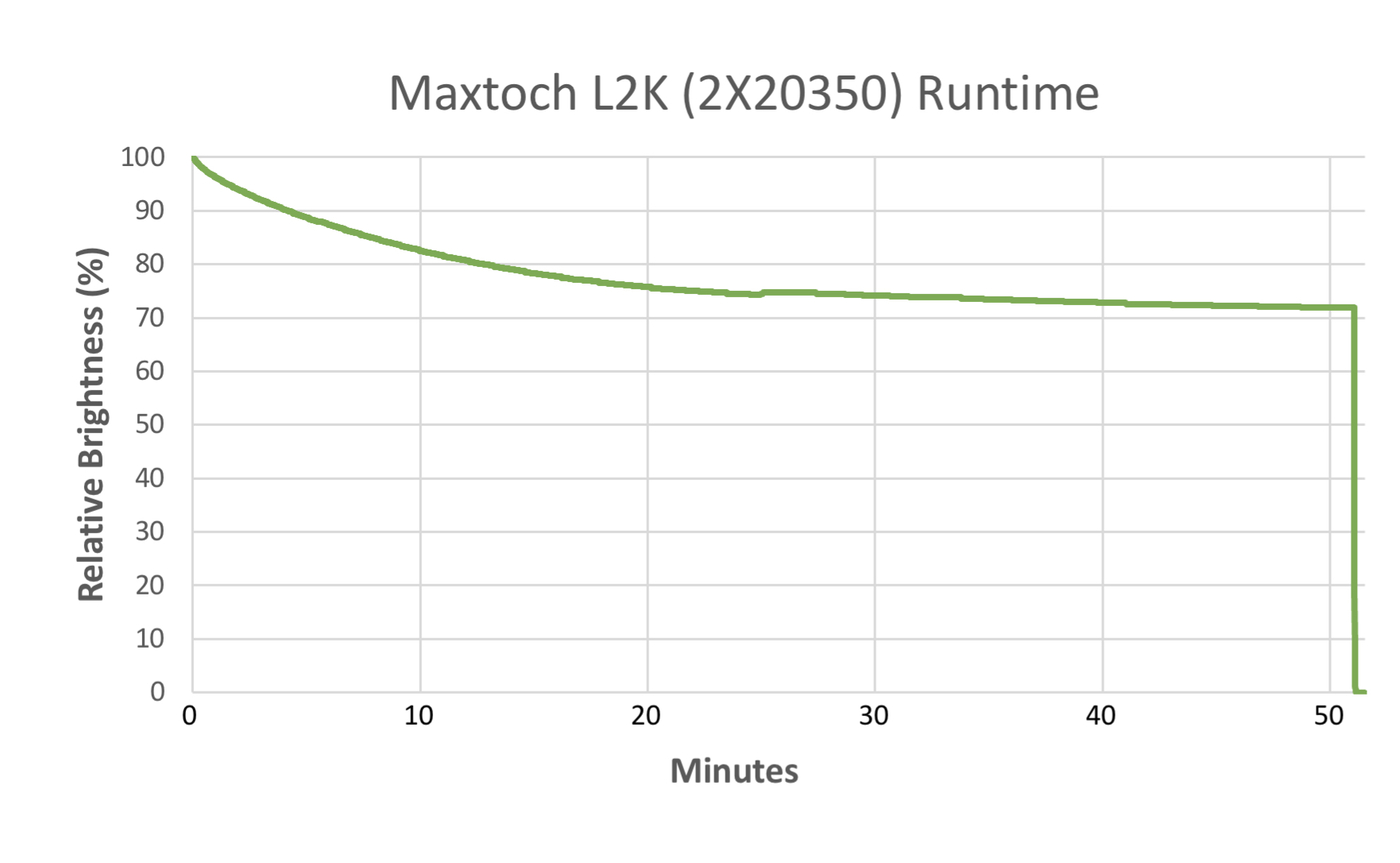
The lack of a thermal stepdown can be attributed to the large heat fins of the L2K/L3K, as pictured bellow, which allow it to dissipate enough heat to avoid overheating for the entire duration of the batteries’ discharge.
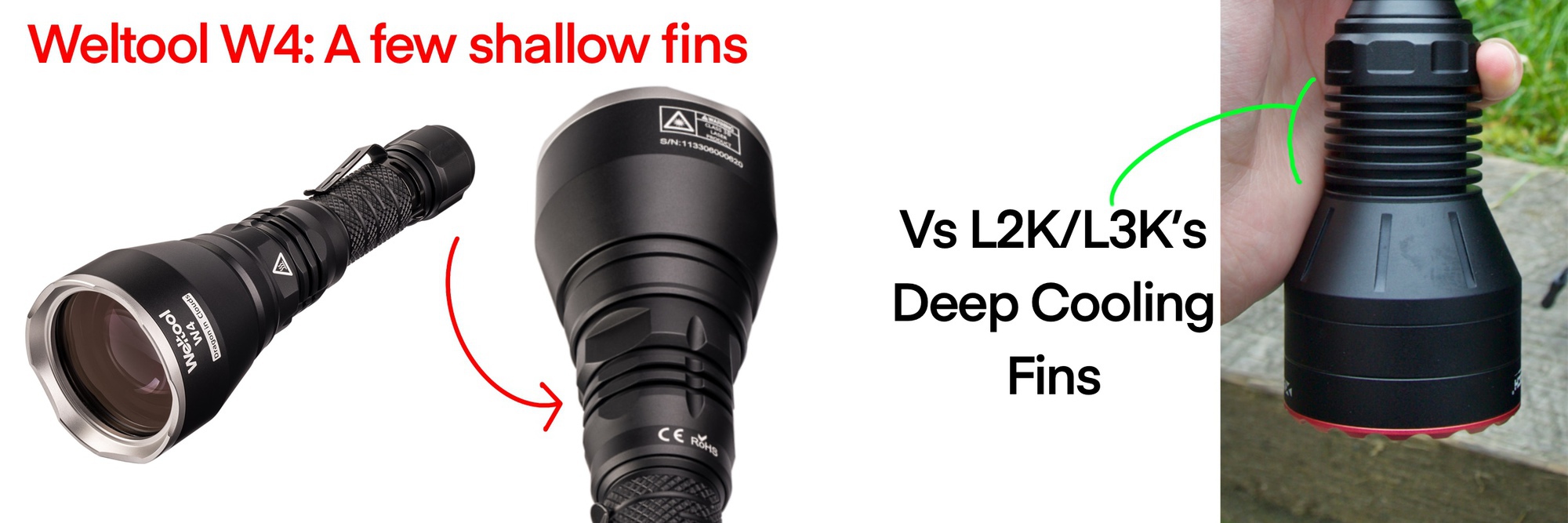
I used my L2K on high mode continuously during my hour long walks. The head only ever felt a bit warm and never got hot enough to be uncomfortable to hold.
I did not measure candela for this review because I have not calibrated my lux meter with a calibration light, making my candela measurements not so useful. The graph above is accurate because it is a measurement of relative brightness.
L2K Beamshots
Here are some beamshots with my L2K next to my 100mW 520nm green laser. The beam is very visible and my L2K feels like a lightsaber! I’m also not afraid of shining it around like I am with my lasers since LEPs are significantly less dangerous.

Beam colour wise, it’s fairly blue because atmospheric scattering (which makes beams visible in the air) favours blue wavelengths of light.
Hotspot wise, my L2K looks fairly neutral with a bit of green while the photos I’ve seen of the L3K hotspot looks a little bluer.
I wouldn’t worry too much about the hotspots’ tint since LEPs’ hotspots are too bright to critique when you’re close up, and it doesn’t matter as much when you’re far away at usable distances.
This beam shot below is zoomed in and from approximately 80 m away. As you can see, the illuminated area is quite tight.
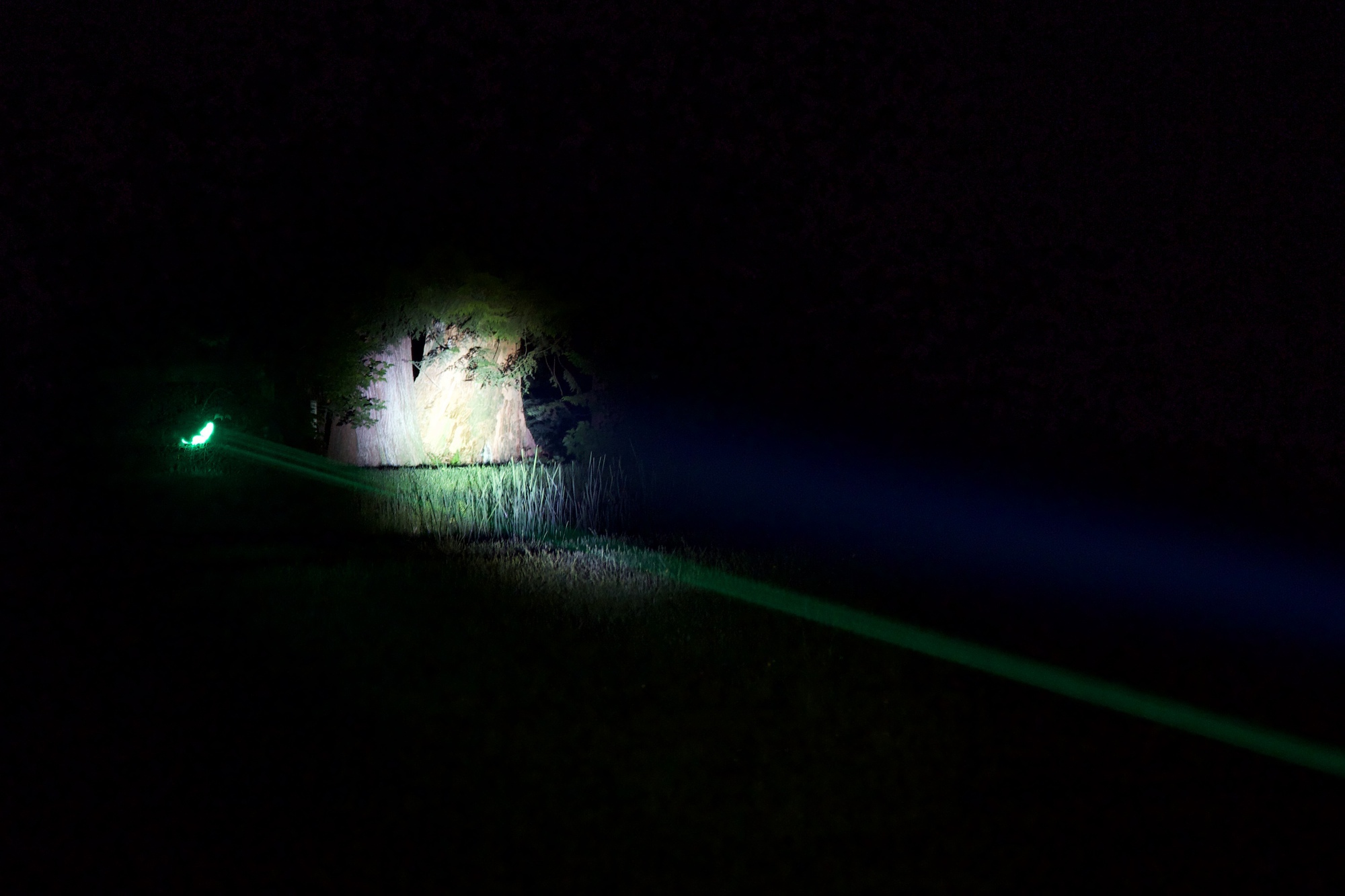
And here are what the beams and hotspots look like with different coloured filters in place. Keep in mind that filters absorb light, meaning that a filtered beam has less light and will be dimmer than an unfiltered one.
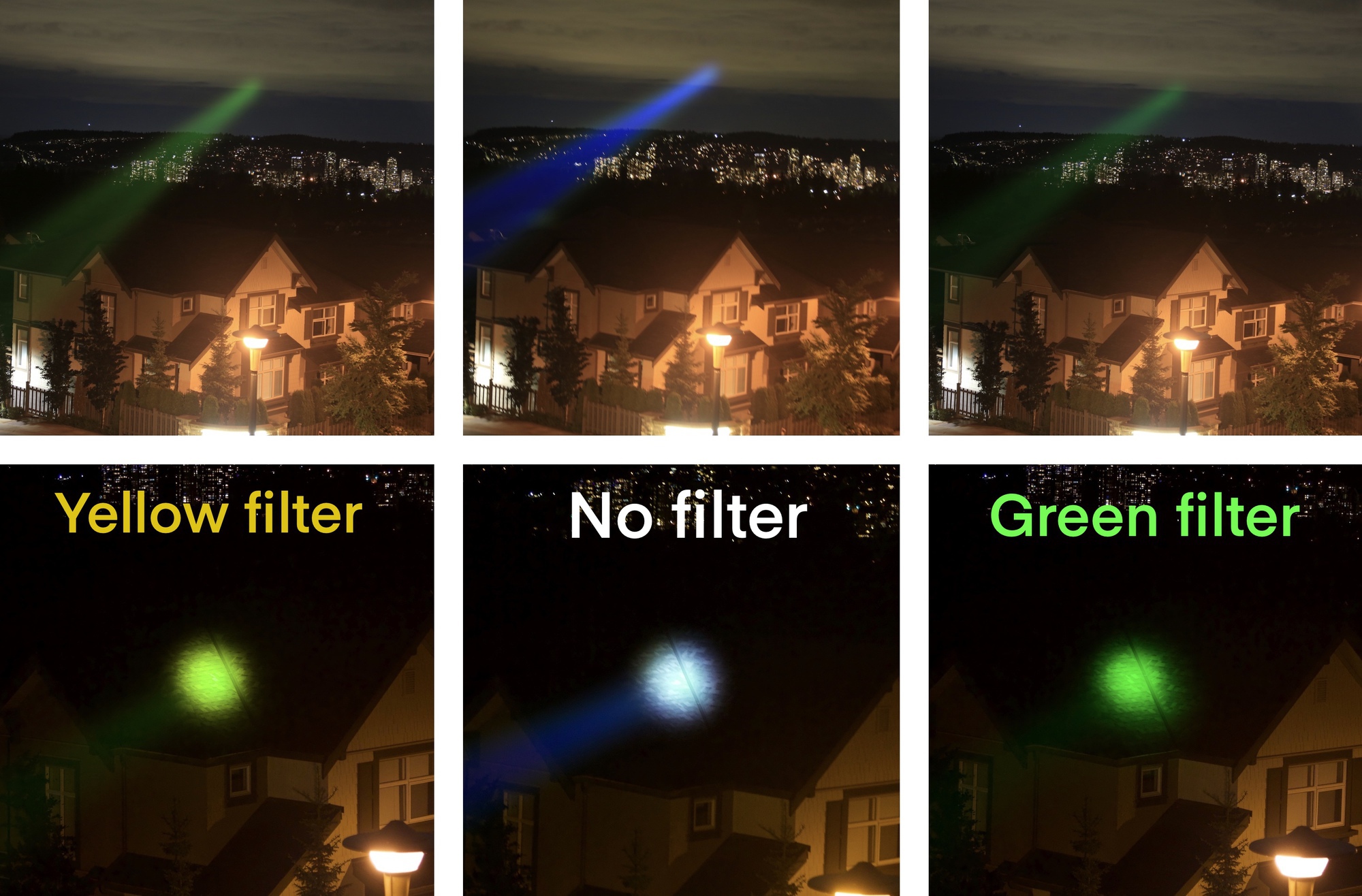
One neat thing about LEPs is that if you’re in a dark enough place around a calm body of water, you can see the reflected beam off the surface of the water when you shine your LEP into the water at an angle.
I couldn’t capture the reflected beam with my camera, but I was able to clearly see it with my eyes. I’ve drawn in where it appears with a dotted line. The reflected beam looks just like the regular beam but fainter. You can see a reflected beam if you’re in a dark enough area with all LEPs but the L2K/L3K’s is particularly bright due to its long throw.
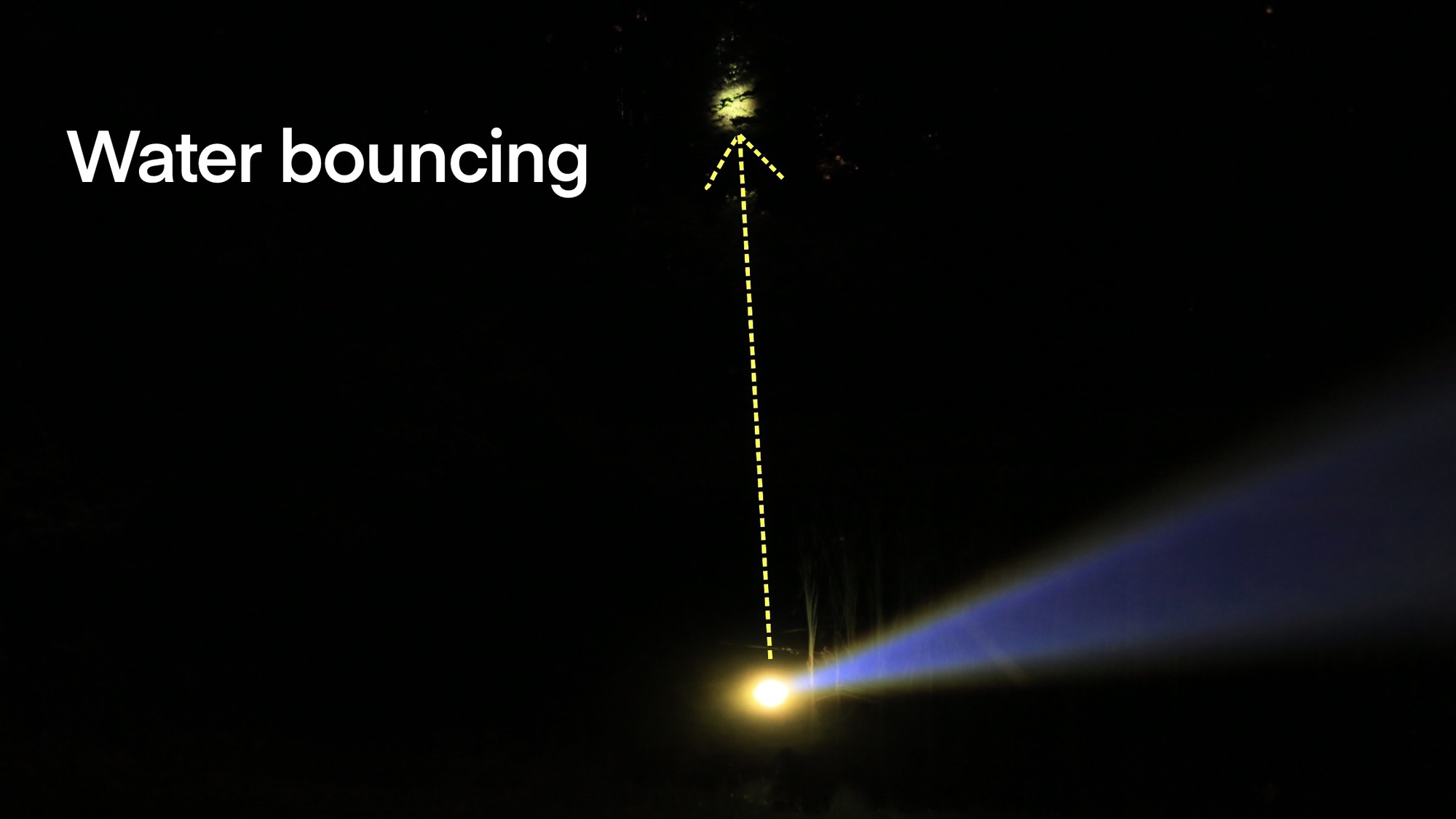
Another sight to behold is that the L2K/L3K can CLOUD BOUNCE! That’s what I call it when you can see the hotspot reflected back at you from clouds in the sky. The effect is much stronger when seen in person and this photo really doesn’t do it justice. I was very disappointed when I discovered that my Nealsgadgets Unbranded LEP was not powerful enough to do this, and I’m very happy to discover that the L2K is able to cloud bounce like my lasers.

L2K or L3K?
Should you get the L2K or the L3K? The hosts are identical, but they do use different laser phosphor modules, and the L3K’s kit comes with the extra red filter. If I were buying an LEP again, I’d choose the L3K for the extra throw distance. The L3K is simply an incremental upgrade over the L2K.
Conclusions and should you buy one?
The L3K really is the best LEP you can buy on the market right now. Its closest competitor, the Weltool W4’s output falls sharply after the first 10-15 minutes while the L2K/L3K maintains its full current output for the entire duration of the batteries’ discharge.
The L2K/L3K really are unmatched on the market in terms of their max throw and continuous output. Yes, technically there is the Acebeam W50 but they don’t sell it to civilians, and it costs over $2300 and is much bulkier.
If you don’t already own an LEP and can afford one, I’d really recommend picking one up. I’ve had so much fun with my L2K ![]()
If you do already own a large LEP, the L2K/L3K probably won’t be a big enough improvement to really be worth purchasing, unless you dislike how quickly your LEP thermal throttles.
Strong Points:
- Best continuous output on the market (other lights have significant drops in performance due to thermal throttling)
- Best candela rating for an LEP on the market. (The” Acebeam W50”:Acebeam White Laser Lights W50|AceBeam® Official Store | Flashlights, Tactical Lights is not readily available and costs >$2300)
What I’d like to see:
- I prefer E-switches and would love to have Anduril 2 on every light I own. With my L2K, I’m sometimes not sure which mode I’m in, and I usually want the highest mode anyways. A 1 mode driver would have been preferable for me, or a UI that always starts at high.
I hope you enjoyed my review, and I’ll be releasing Part 1: Everything I know about LEPs, sometime next week.
Here are the links again to their Aliexpress pages:
L2K short version (2X20350) https://www.aliexpress.com/item/1005002237755766.html
L2K Long Version (2X21700) Page Not Found - Aliexpress.com
L3K (2X21700) Page Not Found - Aliexpress.com
And my referral code for a $30 discount is: SLXS30K (Valid until June 30th)
Cheers and feel free to ask any questions you have!